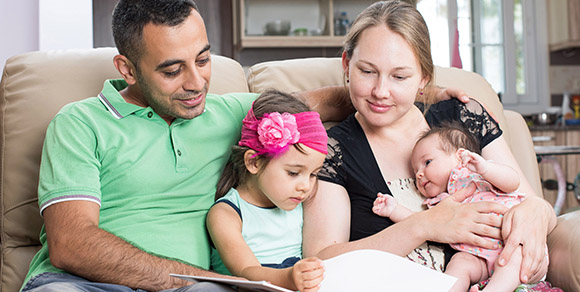A study recently published in Applied Developmental Science measured the connection between children’s home environments before kindergarten and children’s academic skills during their 5th grade year. The study found that “early home learning environments related to children’s academic skills up to 10 years later across all subgroups studied–White, Black, Hispanic, English-speaking, Hispanic Spanish-speaking” (13).
Children’s early learning environments predicted their academic skills the summer before they began kindergarten, and their academic skills at that time predicted their academic skills in 5th grade (12). The researchers concluded that “experiences parents provide their infants as early as the first year of life may solidify into patterns of engagement that will either continue to support or impede children’s emerging skills over time” (12).
The study included 2,204 mothers and their children from low-income and ethnically diverse backgrounds. Children’s home environments and their academic skills were assessed the summer before they began kindergarten and again during 5th grade. Home learning environments were measured based on “children’s participation in learning activities, the quality of mothers’ engagement with children, and the availability of learning materials in the home across children’s first five years of life” (3).
Children’s academic skills were measured using assessments of their vocabulary, literacy skills, math skills, and cognitive ability. In their analysis, the researchers controlled for other characteristics of families, like the mother’s education background, gender and firstborn status of the child in the study, race/ethnicity of the family, mother’s employment status, and if there was father figure living in the home.
Libraries are well-positioned to work with families in those critical years before their child enters kindergarten. Libraries can support positive early home learning environments by sharing ideas for learning activities, modeling and supporting positive caregiver-child interactions, and providing free learning materials.
For more information, the full article can be found here.
Note: This post is part of our series, “The LRS Number.” In this series, we highlight statistics that help tell the story of the 21st-century library.
